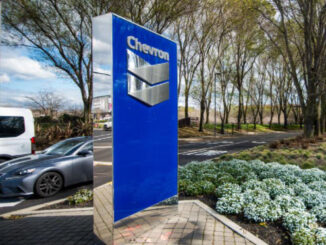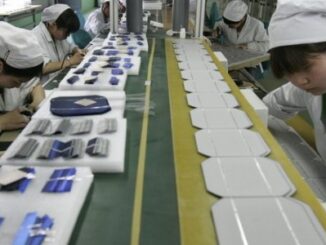
Elon Musk became the richest person in the world by dramatically improving electric vehicles, pushing forward a technology that reduces carbon-dioxide emissions and slows global warming. Now he’s putting $100 million of that fortune into prizes for technologies to remove carbon dioxide from the atmosphere itself.
The carbon-removal contest will be administered by the Xprize Foundation, a nonprofit group that’s held competitions to spur technology development to improve space travel, food and health. The new prize, the largest of its kind, will be backed by a donation from the Musk Foundation, a nonprofit founded by the chief executive officer of Tesla Inc. and Space Exploration Technologies Corp.
“Carbon negativity, not neutrality,” Musk said in a statement. “This is not a theoretical competition… Whatever it takes. Time is of the essence.”
Details of the $100 million prize for innovators who aid the development of carbon dioxide removal (CDR) technologies were released on Monday, following an initial announcement by Musk on Twitter on Jan. 21. Entries for the prize will open on Earth Day, celebrated on April 22. Three winners will be named for three separate prizes—$50 million, $20 million and $10 million—on the same day in 2025.
Conventional carbon capture focuses on removing CO₂ from the exhaust of power plants or factories, then burying the greenhouse gas deep underground to eliminate its contribution to global warming. Today this technology captures about 0.1% of global emissions and it is used in most cases by oil producers or heavy industry to, in effect, achieve carbon neutrality at a limited number of facilities. But overall reductions in worldwide emissions have been delayed for so long that climate scientists are now convinced of the need for newer technologies that remove CO₂ from the air. That’s what Musk means by “carbon negativity.”
Scientists are clear that the world needs to first reduce emissions. But if climate change is to be limited to 1.5°C above pre-industrial levels, as proposed by the Intergovernmental Panel on Climate Change’s special report published in 2018, then the world may also need to capture and store as much as 20 billion metric tons of carbon dioxide from the air. That’s as much as half of current global CO₂ emissions. The 1.5°C threshold is the more ambitious goal under the Paris Agreement, which all countries in the world signed five years ago.
Emissions Pathways
Most scenarios to keep warming below 1.5°C need negative emissions
Source: Intergovernmental Panel on Climate Change
Note: IPCC’s chosen four illustrative pathways
Teams entering the Xprize competition to win a portion of Musk’s $100 million will have to demonstrate a method for capturing as much as 1 ton of CO₂ per day as cheaply as possible, while proving to judges that the technology can be scaled up to remove as much as 1 billion tons a year.
“The Xprize team has deep technical experts and have a history of successfully running similar prizes,” said Noah Deich, president of Carbon180, a non-profit focused on carbon removal. “If there’s a way to get entrepreneurs, who might otherwise try and tackle problems less relevant to the fate of civilization, then Xprize is really well suited to that challenge.”
According to contest officials, the carbon-removal competition is likely to have four tracks—air, land, oceans, and rocks—that focus on different routes technologies can take to achieve CDR. Some of these pathways are already occupied by startups. There are at least three companies with air purifier-like machines that filter and trap CO₂: Canada’s Carbon Engineering, the Swiss company Climeworks, and Global Thermostat based in the U.S. So far, these three existing startups have built pilot plants that can, at best, capture thousands of tons of CO₂ each year.
The prize might spur startups to pursue other viable routes. Oceans naturally dissolve much of the CO₂ that human activity releases, for instance, and scientists have started developing ideas for capturing the dissolved gas held in the water. It’s also possible to use crushed minerals on farmland that speed up the process of trapping CO₂ that would have otherwise happened much too slowly naturally.
“It’s not two or three solutions or a handful of companies, it’s probably a handful of solution types and dozens or hundreds of different efforts that we need,” said Marcius Extavour, executive director of environment at Xprize. “We need a whole industry doing carbon removal.”
If the world gets serious about demand for carbon removal, a study published in 2020 suggested that the emerging industry could come to rival the size of modern fossil-fuel production. Annual revenues from carbon removal could reach as much as $1.4 trillion by 2050—about the same as the oil and gas sector earns today.
The easiest solution for CDR appears to be planting more trees, but that approach also presents a number of problems. The carbon-offsets industry that has capitalized on the idea has been found to often fall short of delivering verifiable CO₂ removal over a long duration. Any nature-based solutions entering the competition for Musk’s prize money will have to show that carbon can stay trapped for 100 years or more, according to Extavour.

The idea of technology prizes goes back at least 300 years, when the U.K. government offered rewards for developing practical methods to determine the precise longitude of ships at sea. That pursuit saw daring spirits invest in some cases much more money than the reward offered, turning the prize into a pathway to win fame and accolades more than cash.
That’s likely the same strategy behind the modern-day version, particularly given the cost of deploying carbon capture at scale. For example, Carbon Engineering Ltd. is looking to scale its direct air capture technology with Occidental Petroleum Corp. The first large-scale plant will capture about 1 million tons of CO₂ each year, but will cost hundreds of millions of dollars to build and spend just as much on annual operating costs.
Xprize is currently in the final stages of a separate competition that is looking to further develop conventional carbon capture technology and find ways to put the CO₂ to use in valuable products, such as synthetic fuel or advanced materials like carbon fiber. A total of 48 teams entered the competition and nine remain in the final round, with two prizes worth $10 million each to be handed out later this year.
“It’s been very difficult to raise capital in” carbon capture, said Extavour. “When we started five years ago, the questions from investors were: Is this real? Does it actually work? These carbon-management solutions were not really mainstream in the climate-intervention conversation then.”
Until now, major oil companies that have the expertise to manage gases at large scale have held back from investing a lot in the technology, which is expensive and the price on carbon has rarely been enough to make it a profitable endeavor. That’s starting to change as investors demand companies improve their environmental reputations. In January, Exxon Mobil Corp. promised to spend $3 billion over the next five years on carbon capture plants.
Even though the prize money comes from Musk’s philanthropy, he may benefit from carbon-removal technologies becoming cheaper. SpaceX’s rocket fuel is currently carbon based, and the company has applied for licenses to drill for natural gas near its launch site in Texas. Musk, who has come under criticism for SpaceX’s carbon footprint, imagines a future with carbon-neutral rocket fuel.
“Rocket flights will be zero net carbon long-term,” the SpaceX chief tweeted in 2019. He has also said that he would like to one day “use solar power to extract CO₂ from the atmosphere, combine it with water, and produce fuel and oxygen” for his rockets. That would only be economical if the cost of carbon-removal technologies falls substantially.
Bloomberg



